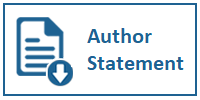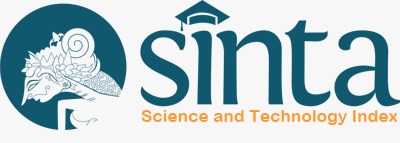Author Guidelines
A. Manuscript Format
The manuscript's text is written in Microsoft (MS) Word (version 7.0 or later). Manuscripts are typed in Calibri, single-spaced, font 11, one column.
Manuscript text (including title page, abstract, main text, and references) followed by tables and figures must be in a word file. Each number must be labelled with a numeric number. Manuscripts that do not comply with the "Manuscript Format" and "Scriptwriting Organization" will be returned to the author.
The text of the manuscript must be written according to the template. The length of the manuscript is 5000-8000 words.
B. Scriptwriting Organization
1. Articles
Articles are research reports containing detailed descriptions of original research and/or summaries of scientific articles in the field of communication and media science, theoretical studies within the scope of communication science and/or theoretical applications to the latest issues in the media field or book reviews. The manuscript should be written in ENGLISH. Articles should be structured in parts (1) Abstract (English), (2) Introduction, (3) Literature review: theories and concepts (4) Methods, (5) Results (6) Discussion (7) Conclusions and (8) Reference.
2. Article Title
The title must be specific, effective and straightforward, maximum 12 words.
3. Abstract (font-size: 12, bold)
Each article must be accompanied by an abstract paragraph maximum of 300 words with one space. The abstract must not repeat the information already in the title. Abstracts must be written in English . Abstract writing in italics.
4. Keywords (font-size: 10, italics)
Immediately after the abstract, provide a maximum of 5 keywords (keywords) written in alphabetical order. Keywords can be concepts, avoid standard terms and abbreviations.
5. Introduction (font size: 12, bold)
Introduction (Introduction) presents the objectives of the study/research/reported manuscript and those with previous work. Use of references or citations only as necessary to provide the most prominent background for the reader to understand. It also contains a brief description of the purpose of the study/research/script and research results. The introduction should include a literature review covering the theories and concepts used in the article—the preliminary composition of the entire article is a maximum 35%.
6. Methodology
The methodology includes information on the researcher's paradigm (not mandatory), the research approach (qualitative/quantitative), the method used, data collection techniques and data analysis techniques. The composition of the method for the entire article ranges from 10 - to 15%.
8. Results and Discussion/Discussion (font-size: 12, bold)
Results and discussion can be separated if it is too long. This section shows a summary of the research results and the researcher's interpretation in relation to the theory/concept used.
9. Conclusion (font-size: 12, bold)
This section contains:
1. Summary of research findings and interpretation
2. Academic suggestions for further related research
The composition of this section of the entire article is around 10%.
10. Reference
All references used in the body of the article must be included in this section. Otherwise, unused references need not be included in this section. References used should be published within the last three years, except for old works that are no longer published but are still relevant. Use American Psychological Association (APA) Style 7 citation style. Use of Mendeley, an open-access reference software, as a referencing manager is highly recommended.















